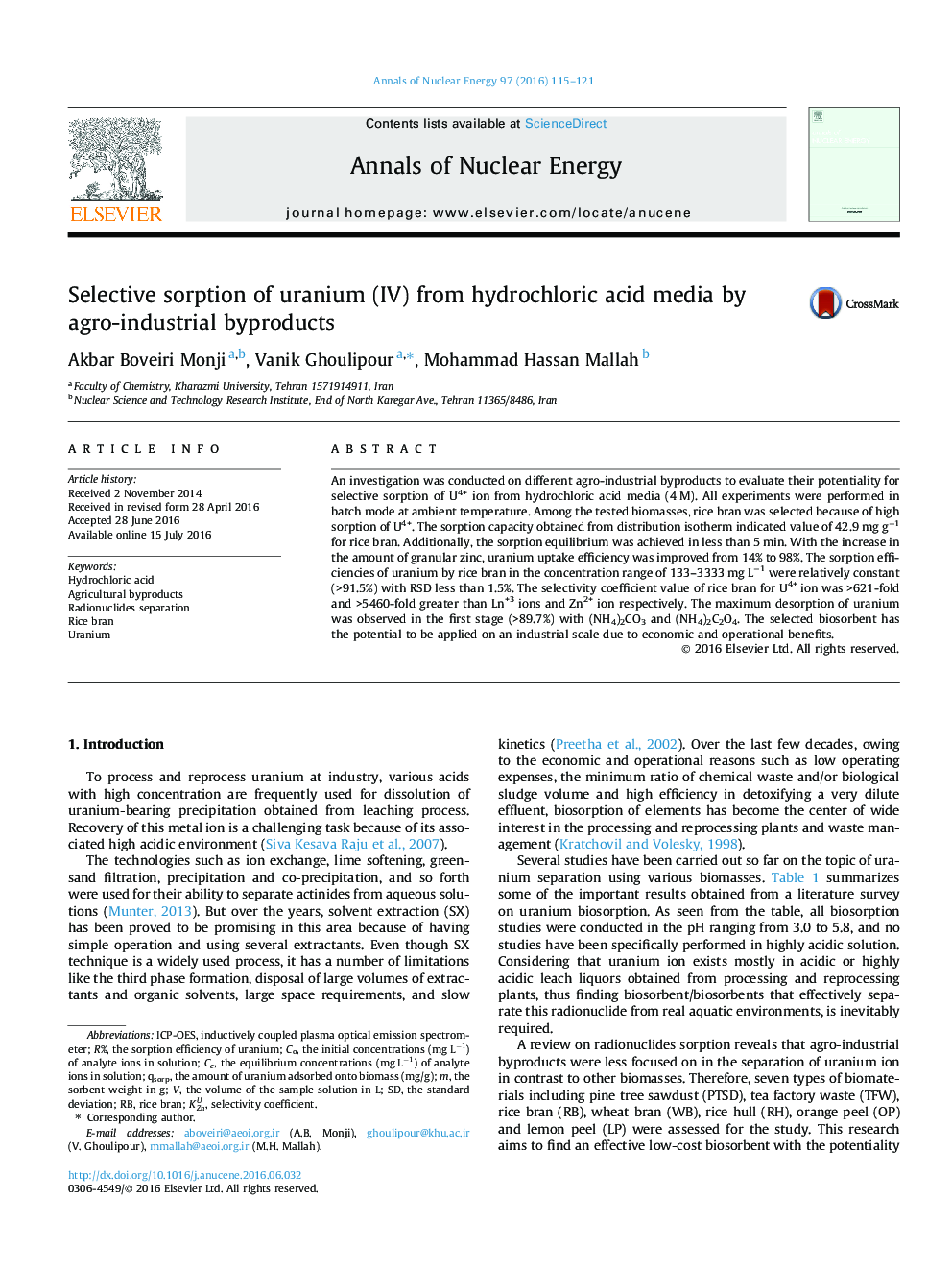| کد مقاله | کد نشریه | سال انتشار | مقاله انگلیسی | نسخه تمام متن |
|---|---|---|---|---|
| 1728013 | 1521100 | 2016 | 7 صفحه PDF | دانلود رایگان |
• Some agro-industrial by-products were evaluated for selective separation of U4+ ion from highly acidic solutions (4 M HCl).
• Bran biomass showed an excellent U(IV) sorption behavior in the strong acidic media.
• With the increasing amount of granular zinc, uranium uptake efficiency was improved from 14% to 98%.
• Hard-hard vigorous interactions exist between functional groups of rice bran and hard cations in highly acidic solutions.
An investigation was conducted on different agro-industrial byproducts to evaluate their potentiality for selective sorption of U4+ ion from hydrochloric acid media (4 M). All experiments were performed in batch mode at ambient temperature. Among the tested biomasses, rice bran was selected because of high sorption of U4+. The sorption capacity obtained from distribution isotherm indicated value of 42.9 mg g−1 for rice bran. Additionally, the sorption equilibrium was achieved in less than 5 min. With the increase in the amount of granular zinc, uranium uptake efficiency was improved from 14% to 98%. The sorption efficiencies of uranium by rice bran in the concentration range of 133–3333 mg L−1 were relatively constant (>91.5%) with RSD less than 1.5%. The selectivity coefficient value of rice bran for U4+ ion was >621-fold and >5460-fold greater than Ln+3 ions and Zn2+ ion respectively. The maximum desorption of uranium was observed in the first stage (>89.7%) with (NH4)2CO3 and (NH4)2C2O4. The selected biosorbent has the potential to be applied on an industrial scale due to economic and operational benefits.
Journal: Annals of Nuclear Energy - Volume 97, November 2016, Pages 115–121
